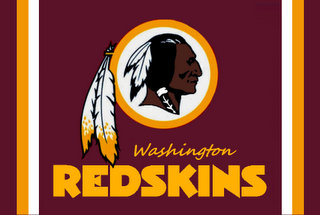Washington, DC…(The following is a portion of the opinion of the court)…JUSTICE ALITO announced the judgment of the Court and delivered the opinion of the Court with respect to Parts I, II, and III–A, and an opinion with respect to Parts III–B, III–C, and IV, in which THE CHIEF JUSTICE, JUSTICE THOMAS, and JUSTICE BREYER join. This case concerns a dance-rock band’s application for federal trademark registration of the band’s name, “The Slants.” “Slants” is a derogatory term for persons of Asian Descent, and members of the band are Asian-Americans. But the band members believe that by taking that slur as the name of their group, they will help to “reclaim” the term and drain its denigrating force. The Patent and Trademark Office (PTO) denied the application based on a provision of federal law prohibiting the registration of trademarks that may “disparage . . . orbring . . . into contempt] or disrepute” any “persons, living or dead.” 15 U. S. C. §1052(a). We now hold that this provision violates the Free Speech Clause of the First Amendment. It offends a bedrock First Amendment principle: Speech may not be banned on the ground that it.
The ruling also covers other trademarks that have come under fire like the Washington’s Redskin’s logo above. Click on the logo above to load the entire ruling.
15 U. S. C. §1052(a).
I
A
“The principle underlying trademark protection is that distinctive marks—words, names, symbols, and the like—can help distinguish a particular artisan’s goods from those of others.” B&B Hardware, Inc. v. Hargis Industries, Inc., 575 U. S. ___, ___ (2015) (slip op., at 3); see also Wal-Mart Stores, Inc. v. Samara Brothers, Inc., 529 U. S. 205, 212 (2000). A trademark “designate[s] the goods as the product of a particular trader” and “protect[s] his goodwill against the sale of another’s product as his.” United Drug Co. v. Theodore Rectanus Co., 248 U. S. 90, 97 (1918); see also Hanover Star Milling Co. v. Metcalf, 240
U. S. 403, 412–413 (1916). It helps consumers identify goods and services that they wish to purchase, as well as those they want to avoid. See Wal-Mart Stores, supra, at 212–213; Park ’N Fly, Inc. v. Dollar Park & Fly, Inc., 469
U. S. 189, 198 (1985).
“[Federal law does not create trademarks.” B&B Hardware, supra, at ___ (slip op., at 3). Trademarks and their precursors have ancient origins, and trademarks were protected at common law and in equity at the time ofthe founding of our country. 3 J. McCarthy, Trademarks and Unfair Competition §19:8 (4th ed. 2017) (hereinafter McCarthy); 1 id., §§5:1, 5:2, 5:3; Pattishall, The Constitutional Foundations of American Trademark Law, 78 Trademark Rep. 456, 457–458 (1988); Pattishall, Two Hundred Years of American Trademark Law, 68 Trademark Rep. 121, 121–123 (1978); see Trade-Mark Cases, 100 U. S. 82, 92 (1879). For most of the 19th century,trademark protection was the province of the States. See Two Pesos, Inc. v. Taco Cabana, Inc., 505 U. S. 763, 780– 782 (1992) (Stevens, J., concurring in judgment); id., at 785 (THOMAS, J., concurring in judgment). Eventually,
Cite as: 582 U. S. ____ (2017) 3
Opinion of the Court
Congress stepped in to provide a degree of national uniformity, passing the first federal legislation protecting trademarks in 1870. See Act of July 8, 1870, §§77–84, 16Stat. 210–212. The foundation of current federal trademark law is the Lanham Act, enacted in 1946. See Act of July 5, 1946, ch. 540, 60 Stat. 427. By that time, trademark had expanded far beyond phrases that do no more than identify a good or service. Then, as now, trademarks often consisted of catchy phrases that convey a message.
Under the Lanham Act, trademarks that are “used in commerce” may be placed on the “principal register,” that is, they may be federally registered. 15 U. S. C. §1051(a)(1). And some marks “capable of distinguishing[an] applicant’s goods or services and not registrable on the principal register . . . which are in lawful use in commerce by the owner thereof ” may instead be placed on a different federal register: the supplemental register.§1091(a). There are now more than two million marks that have active federal certificates of registration. PTO Performance and Accountability Report, Fiscal Year 2016,
p. 192 (Table 15), https://www.uspto.gov/sites/default/files/documents/USPTOFY16PAR.pdf (all Internet materials aslast visited June 16, 2017). This system of federal registration helps to ensure that trademarks are fully protected and supports the free flow of commerce. “[N]ational protection of trademarks is desirable,” we have explained, “because trademarks foster competition and the maintenance of quality by securing to the producer the benefits of good reputation.” San Francisco Arts & Athletics, Inc. v. United States Olympic Comm., 483 U. S. 522, 531 (1987) (internal quotation marks omitted); see also Park ’N Fly, Inc., supra, at 198 (“The Lanham Act provides national protection of trademarks in order to secure to the owner ofthe mark the goodwill of his business and to protect the ability of consumers to distinguish among competing producers”).



